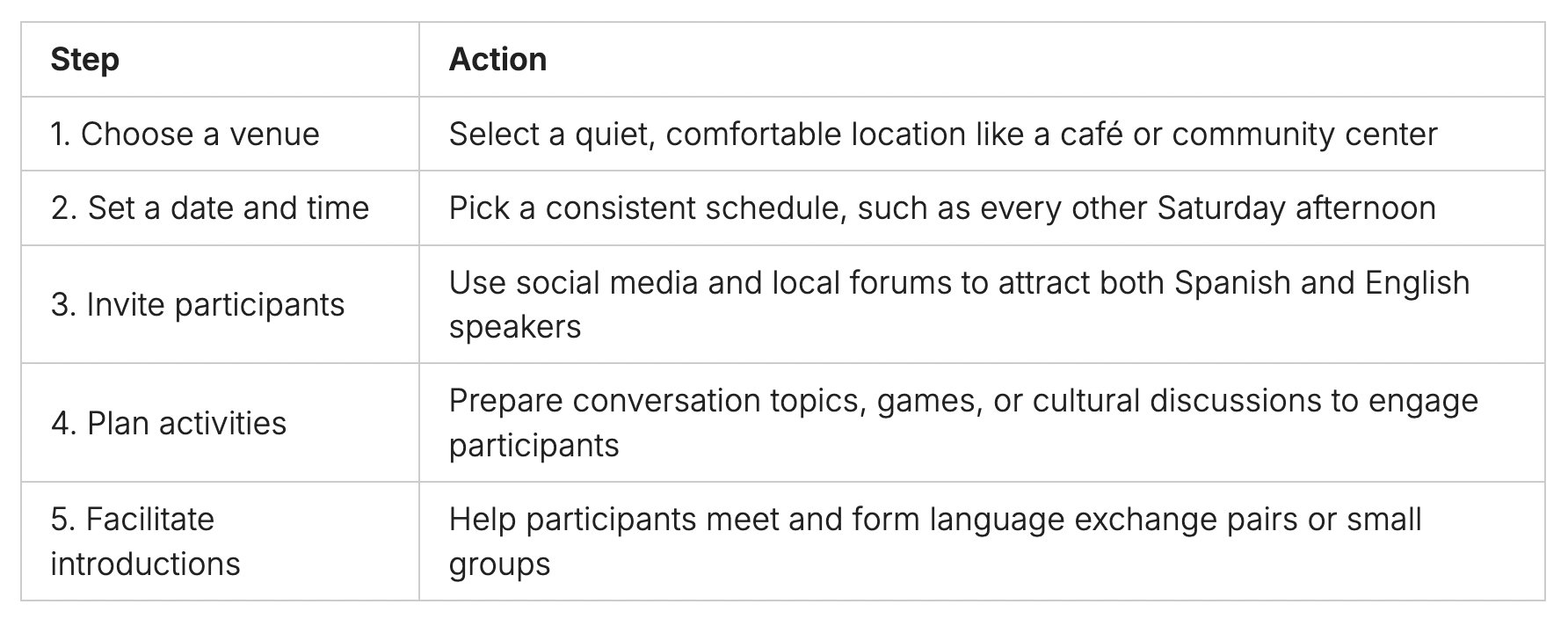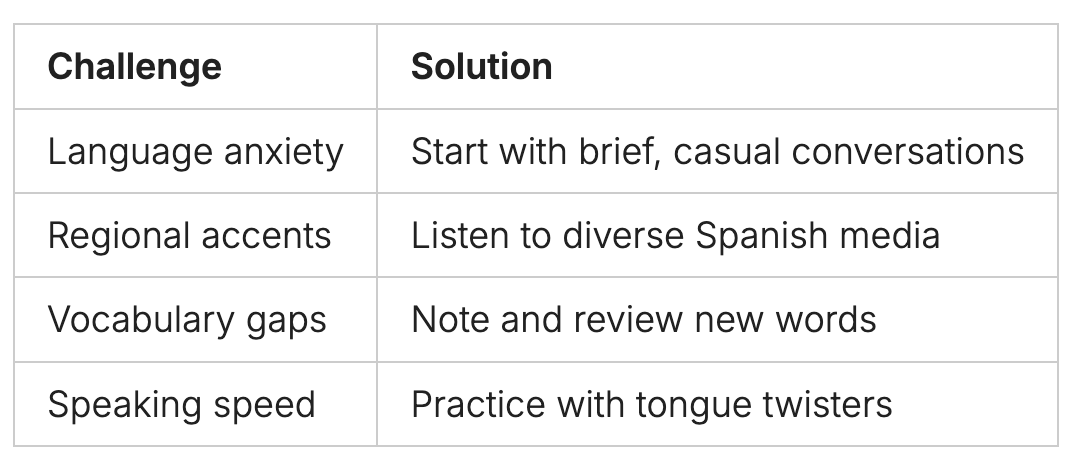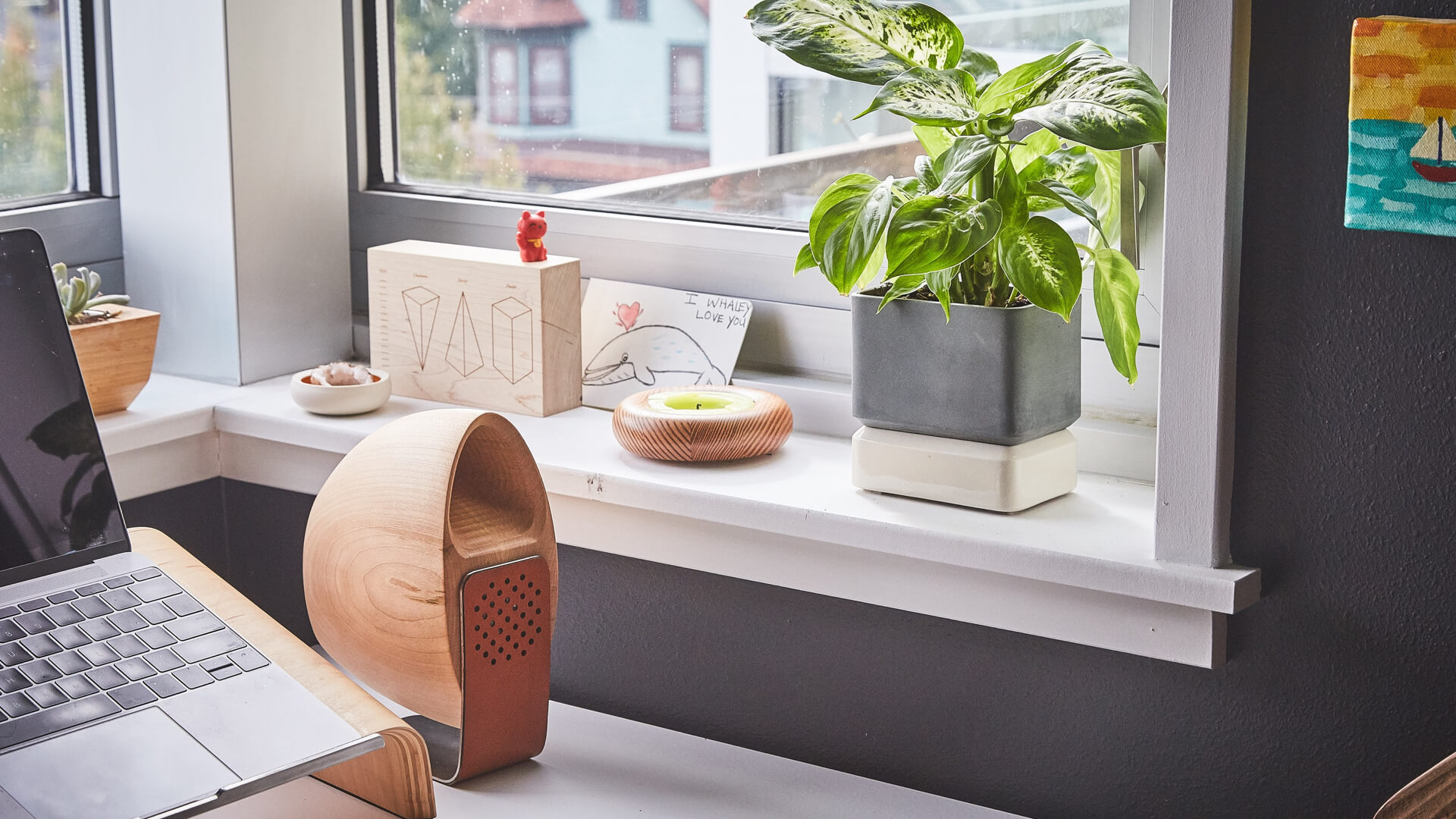Imagine walking through a lively market in Madrid, with the smell of fresh paella everywhere. You confidently go up to a vendor, ready to order your lunch in Spanish. But when you try to speak, you freeze. The words you've practiced so much in class suddenly feel strange.
We've all been in that situation – trying to move from textbook Spanish to real conversations. That's why we're looking at the best ways to get better at Spanish by talking to native speakers. We'll see how these talks can change your language learning journey.
Key Takeaways
- Practicing with native speakers improves Spanish fluency
- Real-world interactions enhance authentic pronunciation
- Native speaker conversations provide cultural context
- Regular practice leads to more natural language use
- Engaging with native speakers boosts confidence in Spanish
Why Learning Spanish with Native Speakers is Essential
Learning Spanish with native speakers brings huge benefits. It boosts your conversational skills and speeds up your language learning. Let's see why talking with native speakers is key for your Spanish journey.
Natural Language Acquisition Through Authentic Interactions
Talking with native speakers lets you see how Spanish is really used. You pick up on everyday phrases and slang that books don't cover. This way, you learn to speak more naturally and understand local expressions.
Cultural Understanding and Context
Language and culture go hand in hand. Talking with native speakers gives you a peek into Hispanic cultures and traditions. This knowledge helps you communicate better in different situations.
Developing Proper Pronunciation and Accent
Native speakers are the best for learning Spanish pronunciation. You'll get the right rhythm and stress. Practicing with them makes your accent sound more natural and improves your listening.
Focus on practicing with native speakers to speed up your Spanish learning. This method not only improves your language skills but also opens doors to new friendships and cultural experiences.
Practice Spanish with Native Speakers: Methods and Opportunities
Ready to boost your Spanish skills? We've got exciting ways to practice with native speakers. These methods will enhance your language skills and introduce you to Spanish-speaking cultures.
Language exchange platforms are a great way to practice Spanish. They connect you with speakers from all over the world. You can chat, video call, or meet in person to improve your skills and help others learn English.
Virtual language meetups are another fantastic option. Join online groups for regular conversation sessions. This lets you talk with native speakers and other learners in a friendly setting.
- Language exchange apps
- Spanish conversation clubs
- Online tutoring sessions
- Cultural events and workshops
For a more structured approach, consider professional native Spanish tutors. They can create lessons that fit your needs and help you overcome language challenges.
Don't overlook social media! Many platforms have Spanish-learning communities for daily practice. Follow Spanish-language accounts, join groups, and take part in language challenges to dive deeper into the language.
"The best way to learn a language is to surround yourself with it." - Kerstin Cable, language learning expert
Exploring these methods will open up exciting opportunities to practice Spanish with native speakers. Remember, regular practice is crucial. Make it a habit to engage in Spanish conversation practice often.
1- Finding the Right Language Exchange Partners Online
Looking for spanish speaking partners to improve spanish fluency? Online language exchange platforms offer a world of opportunities. Let's explore how to find the perfect match and make the most of your language learning journey.
Popular Language Exchange Platforms
Many websites cater to language learners seeking conversation partners. Some top choices include Englo, Tandem, HelloTalk, and Conversation Exchange. These platforms connect you with native Spanish speakers who want to practice English, creating a mutually beneficial exchange.
Creating an Effective Language Exchange Profile
Your profile is your first impression. Make it count! Include your current Spanish level, learning goals, and interests. A friendly photo and a brief introduction in both English and Spanish can attract potential partners. Be honest about your availability and preferred communication methods.
Setting Clear Learning Goals with Partners
Once you've connected with a partner, discuss your objectives. Do you want to focus on pronunciation, grammar, or casual conversation? Setting clear goals helps both parties stay motivated and track progress. Remember, consistency is key in any online language exchange.
- Schedule regular practice sessions
- Prepare topics or questions in advance
- Alternate between Spanish and English during conversations
- Provide constructive feedback to each other
By following these tips, you'll maximize your online language exchange experience and be well on your way to Spanish fluency. Happy chatting!
2- Virtual Spanish Language Meetups and Communities
Virtual Spanish language meetups are a great way to practice speaking Spanish. We can talk with native speakers and other learners from all over the world. It's all done from our homes, making it easy and fun.
Many websites host these virtual meetups. We can join group talks, cultural exchanges, and more. There are even special rooms for one-on-one chats, helping us practice with different people.
Benefits of Virtual Spanish Meetups
- Regular practice with native speakers
- Exposure to diverse accents and dialects
- Flexible scheduling options
- Cultural insights from global participants
To get the most out of these meetups, we should prepare topics and join in the talks. Some groups have games or guided chats to keep things interesting and helpful.
"Virtual meetups have revolutionized language learning, bringing the world to our fingertips."
Now, let's look at some top sites for virtual Spanish communities:
By joining these online groups, we can improve our Spanish skills and make friends with people who love languages.
3- Working with Professional Native Spanish Tutors
Working with native Spanish tutors is a big step up for language learners. They share their vast knowledge and real-world experience. This helps you get better at speaking Spanish.
Benefits of Structured Learning with Professionals
Native Spanish tutors give you lessons that fit your needs. They make plans that focus on your weak spots and build on your strengths. You'll practice speaking in real situations, which boosts your confidence.
Choosing the Right Tutor for Your Goals
Finding the right tutor is key. Look for someone who knows your interests, like business Spanish or everyday chats. Choose someone whose teaching style you like. A good match makes learning fun and productive.
Making the Most of Your Tutoring Sessions
To get the most from your sessions, come ready with questions and topics. Practice between lessons and listen to feedback. Consistency is important for improving your Spanish. Regular sessions will help you reach your goals.
"A good teacher can inspire hope, ignite the imagination, and instill a love of learning."
4- Immersive Spanish Learning Applications
Learning Spanish through immersion is very effective. We've discovered some top apps that connect you with native speakers. These apps mix technology with human interaction, making learning fun and productive.
Rosetta Stone is known for its immersive method. It teaches Spanish through real-life situations, helping you think in Spanish naturally. The TruAccent feature lets you practice with native speakers, improving your pronunciation.
Babbel takes a different approach. It focuses on everyday conversations. Lessons include recordings of native Spanish speakers, exposing you to authentic accents and expressions. This helps you get the natural rhythm and intonation of Spanish.
- Rosetta Stone: Immersive scenarios, TruAccent feature
- Babbel: Practical conversations, native speaker recordings
Both apps let you interact with native Spanish speakers. This direct interaction is key to improving your skills. It's not just about learning words and grammar. It's about using Spanish in real-life situations.
Remember, consistent practice is crucial. Use these apps often to surround yourself with Spanish. Over time, your comprehension and speaking skills will greatly improve. Embrace these tools on your journey to becoming fluent in Spanish!
5- Spanish Conversation Practice Through Social Media
Social media is a great way to practice Spanish. We can find Spanish speaking partners and join language exchange groups online. Let's see how to use popular social networks to improve our Spanish.
Instagram Language Learning Communities
Instagram is perfect for those who learn well through pictures. We can follow Spanish teachers who share vocabulary, grammar tips, and conversation starters. By commenting on their posts, we talk with native speakers.
Some accounts even host live sessions. Here, we can practice speaking Spanish with others in real-time.
Spanish Learning Groups on Facebook
Facebook groups are great for finding language exchange partners. We can join groups for Spanish learners and share our interests and goals. Many groups have weekly video chats or text-based sessions.
These sessions are a supportive place to practice Spanish. We can chat with people at different skill levels.
Twitter Language Exchange Opportunities
Twitter is fast and perfect for quick Spanish practice. We can follow Spanish news, join language chats, or do daily writing prompts. The short character limit helps us learn to express ideas quickly.
Plus, we can find native speakers for language exchange using hashtags like #languageexchange or #intercambiodeidiomas.
Using these social media platforms, we can make learning Spanish a part of our daily routine. We surround ourselves with the language, making practice easy and natural.
Real-World Spanish Conversation Opportunities
Ready to improve your Spanish? Real-world dialogues offer the best way to learn. Let's find exciting ways to practice with native speakers in real settings.
Local language meetups are great for face-to-face talks. They happen in cafes or community centers. It's a relaxed place to practice Spanish with others.
Cultural events celebrate Hispanic heritage. They're perfect for practicing Spanish in a fun way. You can enjoy live music, dance, and workshops while learning.
Volunteering is another great way to get better at Spanish. Many groups need bilingual volunteers. It's a chance to practice Spanish while helping your community.
By taking part in these opportunities, you'll get better at Spanish. You'll also learn a lot about different cultures. Remember, the more you practice, the better you'll get. Dive into these experiences and see your Spanish improve!
1- Cultural Events and Language Exchange Meetups
Diving into Spanish culture and meeting native speakers is key for language learning. We've found great ways to boost your Spanish skills through cultural events and meetups.
Finding Local Spanish Cultural Events
Look around your area for Spanish cultural events. These events give you real-life experiences and chances to talk with native speakers. Look at local libraries, community centers, and Hispanic groups for events. Food festivals, art shows, and concerts are great for practicing Spanish in a fun way.
2- Organizing Your Own Language Exchange Events
Be proactive and host your own language exchange events. This way, you can tailor the experience for better Spanish practice. Begin with a few people at a coffee shop or park. As your group grows, try new places to keep things fresh.
Here's a simple guide to organize a successful language exchange event:
By actively seeking out or creating these opportunities, you'll fast-track your Spanish learning journey through real-world practice and cultural immersion.
3- Spanish Language Podcasts with Native Speakers
Spanish language podcasts are a great way to get better at listening. They let you hear real Spanish spoken by native speakers. This is a great way to learn conversational Spanish.
Radio Ambulante is one of our top picks. It tells stories from Latin America, perfect for those who know some Spanish. Coffee Break Spanish is great for beginners. It teaches you Spanish in small, easy lessons.
These podcasts help you get used to different Spanish accents and sayings. This is key to understanding Spanish better. It also helps you talk Spanish with people from different places.
"Podcasts have revolutionized my Spanish learning journey. They're like having a native speaker in my pocket, ready to chat whenever I want!"
To get the most out of Spanish podcasts:
- Listen often, even if it's just for 15 minutes a day
- Use transcripts to follow along and get better at understanding
- Repeat phrases to practice speaking Spanish like a native
- Talk about the episodes with language partners to learn more
Adding Spanish podcasts to your study routine will make you more confident. You'll be able to talk Spanish with native speakers more easily.
4- Spanish Conversation Practice Games and Activities
Want to make learning Spanish fun? We've got exciting games and activities for you. They make practicing your Spanish conversation a joy. Let's dive into some fun ways to boost your skills and confidence.
Role-Playing Exercises
Role-playing is a great way to practice Spanish in real-life situations. Imagine ordering food, booking a hotel room, or asking for directions. These exercises help you think fast and use words in context.
Interactive Language Games
Language games make learning Spanish fun and engaging. Try word association games, Spanish Scrabble, or digital apps that turn learning into a game. These games help you remember words quickly, improving your fluency and vocabulary.
Conversation Starters and Topics
Having conversation starters can help you start talking in Spanish. Talk about your hobbies, favorite movies, or travel experiences. Here's a table with some interesting topics to get you started:
By adding these games and activities to your routine, you'll practice Spanish more often and with more joy. Remember, consistent practice is essential to improve your Spanish. So, make it fun and you'll see your progress in no time!
Common Challenges and How to Overcome Them
When we practice Spanish with native speakers, we often face hurdles that can slow our progress. Let's explore these challenges and find ways to conquer them, boosting our Spanish fluency along the way.
Language anxiety is a common obstacle. Many learners feel nervous when engaging in real-world Spanish dialogues. To combat this, start with small, low-pressure conversations. Gradually increase your interaction time as you become more comfortable.
Understanding regional accents can be tricky. Expose yourself to various Spanish dialects through podcasts, movies, and TV shows. This diversity will help you adapt to different accents when you practice Spanish with native speakers.
Vocabulary gaps can hinder fluency. Keep a notebook handy to jot down new words during conversations. Review and practice these words regularly to expand your Spanish vocabulary.
Remember, every challenge you overcome brings you closer to Spanish fluency. Embrace these obstacles as opportunities for growth and keep practicing!
Measuring Your Progress in Conversational Spanish
Tracking your improvement is key when you practice Spanish with native speakers. It keeps you motivated and shows you what to work on. Let's look at good ways to measure your progress in conversational Spanish.
Setting Achievable Milestones
To get better at Spanish, start with clear, reachable goals. These could be:
- Having a 5-minute conversation without pausing
- Learning 20 new vocabulary words weekly
- Understanding 80% of a Spanish podcast episode
Break these big goals into smaller, weekly ones. This makes your journey to speaking Spanish more doable and fulfilling.
Tracking Your Language Development
To keep track of your progress:
- Keep a language journal to record new phrases and idioms
- Use language learning apps that track your daily streak and vocabulary growth
- Record yourself speaking Spanish regularly and compare over time
- Take periodic self-assessments or online Spanish proficiency tests
Remember, being consistent is crucial when practicing Spanish with native speakers. Regular checks on your progress will help you stay focused and celebrate your Spanish achievements.
Building Confidence in Spanish Conversations
Improving your Spanish conversation skills is crucial. We all doubt ourselves when speaking with native speakers. But, there are ways to boost your confidence and get better at speaking Spanish.
Practice is key to feeling more confident. Talking regularly with Spanish speakers helps you get used to the language. Start with simple chats and then move on to more complex ones as you feel more sure of yourself.
Making mistakes is a normal part of learning. Even native speakers sometimes make errors. See each mistake as a chance to get better at Spanish.
"The only way to do great work is to love what you do." - Steve Jobs
This quote is perfect for learning a language. Enjoy the journey of improving your Spanish, and your confidence will grow.
Here are some tips to boost your confidence:
- Set realistic goals for each conversation
- Prepare topics in advance to discuss with your language partners
- Record yourself speaking Spanish and listen back to track progress
- Join Spanish language meetups to practice in a supportive environment
 Confidence Levels
Confidence LevelsBy using these strategies and talking with Spanish speakers, you'll get more confident and fluent. Remember, every conversation is a step towards becoming better at Spanish.
Tips for Maintaining Long-term Language Exchange Relationships
Creating lasting bonds with Spanish speakers is vital for a successful online language exchange. We've collected some useful tips to help you grow these relationships. These tips will also boost your Spanish conversation skills.
Setting Regular Practice Schedules
Being consistent is key in learning a new language. Make a plan for your Spanish practice. This could be weekly video calls or daily texts. Regular chats keep the momentum going and make sure both sides stay committed.
Building Mutual Benefits
A good language exchange benefits both sides. Make sure you and your partner get something out of each session. Switch between Spanish and English to keep things fair. This way, you both grow together.
Keeping Conversations Engaging
To keep your Spanish chats interesting, try different topics. Here's a table with some ideas:
Success in online language exchange comes from respect, regular effort, and a love for learning. By using these tips, you'll build strong relationships with your Spanish speaking friends. And you'll get better at speaking Spanish too.
Conclusion
We've looked at many ways to practice Spanish with native speakers. This is key to getting better at Spanish. You can find online language exchanges or join local cultural events. These options are endless.
By talking with native speakers, you'll learn how to speak Spanish correctly. You'll also get to know more about their culture.
Don't forget, practicing regularly is important. Set goals for yourself, track how you're doing, and don't worry about making mistakes. You can use virtual meetups, hire a tutor, or try out apps. Each one has its own benefits for learning Spanish.
As you start using these methods, you'll become more confident. Soon, you'll be able to hold conversations in Spanish. You'll understand things better and even think in Spanish. So, take the first step to practice Spanish with native speakers. Your future self will be grateful!
FAQs
Why is practicing Spanish with native speakers so important?
Practicing with native speakers is key because it gives you real language practice. It helps improve your pronunciation and accent. It also boosts your cultural understanding and fluency. We think it's the best way to learn Spanish naturally.
How can I find native Spanish speakers to practice with online?
You can find native speakers online in many ways. Try using apps like Tandem or HelloTalk. Join virtual Spanish meetups or language learning groups on social media. You can also find professional tutors on sites like italki or Verbling.
Are language exchange partnerships effective for improving fluency?
Yes, they are very effective. They offer real conversations and regular practice. To get the most out of them, set clear goals, stick to a schedule, and focus on improving both languages.
How often should I practice Spanish with native speakers to see improvement?
Practice at least 2-3 times a week for noticeable improvement. Short, frequent sessions are better than long, rare ones. The more you practice, the faster you'll get better.
What should I do if I feel nervous about speaking Spanish with native speakers?
Feeling nervous is normal. Start with short talks and prepare topics in advance. Remember, mistakes are part of learning. As you get more experience, your confidence will grow. Many native speakers are patient and appreciate your effort.
How can I improve my Spanish pronunciation when practicing with native speakers?
Listen closely to how native speakers speak. Ask them to repeat words or correct your pronunciation. Recording your talks and listening back can help you improve. Practice with different speakers to get used to various accents.
Are there any free resources for practicing Spanish with native speakers?
Yes, there are many free resources. Look into language exchange apps, join Spanish groups on Facebook or Discord, or attend free virtual meetups. While free, paid resources like tutoring can offer more structured practice.
How can I make the most of my conversations with native Spanish speakers?
Come prepared with topics or questions. Listen well and repeat phrases. Ask for clarification and take notes on new words. Don't be afraid to make mistakes or ask for slower speech. These tips will help you learn more from your conversations.
Can watching Spanish TV shows or listening to podcasts help me practice with native speakers?
Absolutely! TV shows and podcasts are great for getting used to native speech. They're not interactive, but they're good for learning. Use them along with talking to native speakers for a balanced learning approach.
How do I know if I'm making progress in my Spanish conversations with native speakers?
Keep track of your progress to stay motivated. Look for signs like understanding more, responding faster, using more vocabulary, and feeling more confident. Keep a journal, record conversations, or take self-assessments to measure your growth.
Start speaking a second language with confidence.
Join Next Speaking Event
 Benefits of practicing
Benefits of practicing Platforms
Platforms Qualities
Qualities Opportunities
Opportunities Guide
Guide Conversation Starters
Conversation Starters Challenges
Challenges Topics
Topics
